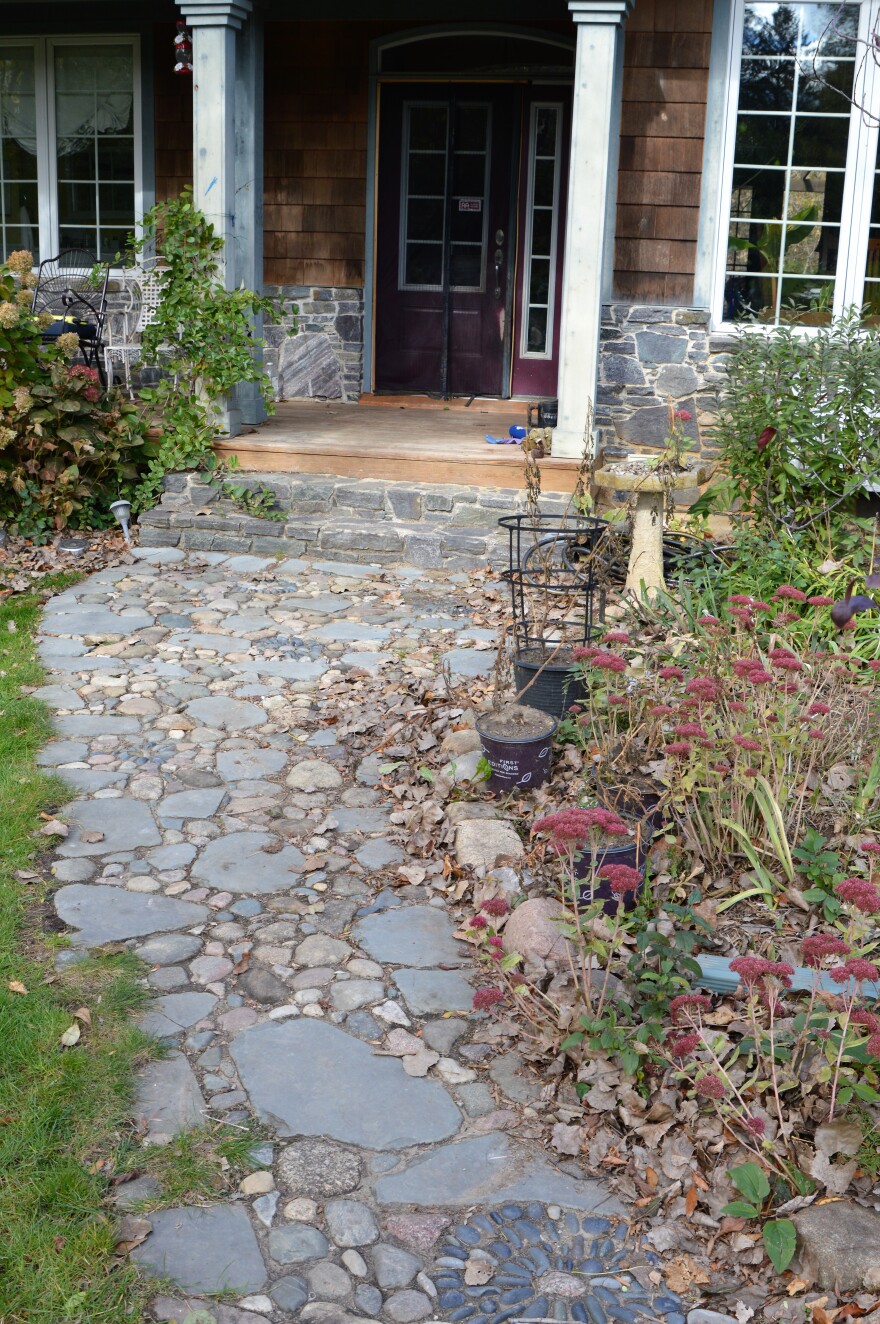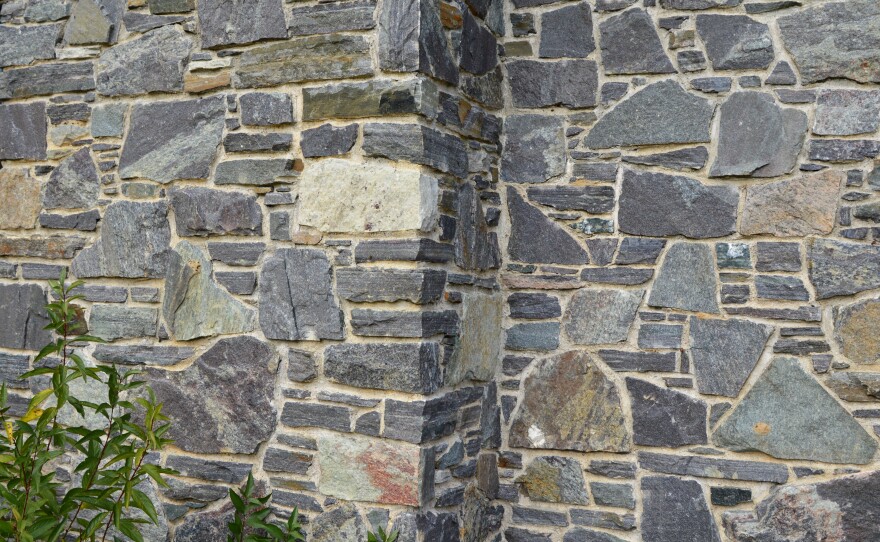
Tom Fuleky is showing me some of his work. He’s a stonemason and he’s been at it for nearly 50 years.
“And it took me 30 to really figure it out. And I know it sounds crazy, but once I figured it out, oh my god, it wasn't as frustrating,” he says.
Fuleky says up until that point, he was doing the work. Nobody complained.
“Well, I did the same style that these guys did. And there's a book that I got and I recommend it to a lot of students. It's The Art of Stonework [the correct title is The Art of the Stonemason and it's available here.] It's from a Scotchman. I don't know if he's still alive. His name is Ian Cramb. And you follow his basic stuff and that's all it is. You know, it started evolving. And once I got going it just it was so cool," he says.

Fuleky says in part, he just lets the stone be a stone. He doesn’t chip away at it to reshape it. And he doesn’t turn his stones on end. He doesn’t like the vertical lines and he says it weakens the structure. He lays the stone flat. Fills in with small stones when needed. But he’s looking for horizontal lines as he shows me on his house.
TF: “See how lineal it is? And the way I try to teach my students, you level up. You go over. You see, you get rid of those vertical joints. I taught a class at Washtenaw (Community College) about 18 years ago. I had 16 people and a grandma. I taught her how to split stones. Ah, these these guys, these guys just loved it," he says. "I had, you know, just basic rules that I follow. Everything's laid down. There's nothing standing up here. See the corners? Tie it in and, okay, you can definitely see the pieces in there, but I lay the stone like it is. In other words, I don't do all these weird cuts. I laid that hole and put the pieces around there.”
LG: "It looks like a big jigsaw puzzle, a really complex one."
TF: "Yeah, but it's, you know, you just start laying and it takes over. And it's fun."
How he places the stone is important to him, but so is the other material a stonemason uses.

TF: "What I think is really important is the mortar mix I use. I make my own mortar. I use a coarse sand, about three quarters lime, and about a quarter cement. And what that is, it's a weaker mixture. That doesn't sound right. But what it does is it's self healing if the wall is moving."
LG: "In what way?"
TF: “Well, if it moves, the mortar will tend to move with it."
LG: “So, it's got a little flexibility?”
TF: “A little flexibility. The modern mortars don't have that.”
Fuleky says he really got to the point where being a stonemason didn’t seem to be such a "job" as it was before.
TF: “And you're always improving on yourself.”
LG: "Why do you enjoy it?"
TF: “Just the outside and it's a pleasure. It's a pleasure. I like outside but, you know, November on, I hate it. I just despise it. Can't make any money. You know you're putting up plastic. Everything's got to be heated. It's awful. It's awful.”
There are a lot of stone structures in Ann Arbor. A lot of stone churches. And Fuleky has worked on additions to the buildings.
“I helped fix St. Thomas Church and I looked at the stonemasons a hundred years ago. Beautiful work but they got these really long vertical joints. So I'm looking at this and they got cracks in it. So they didn’t know everything. But they were strong farm boys. I could never pick up those stones,” he says.

He’s a little skeptical of where the trade is going. Besides a trowel, he basically has one tool he uses, a stone splitter. It’s kind of like if a dull axe and a sledge hammer had a baby. It’s heavy. He says he’s watched as one of today’s stonemasons took a different approach.
“They drill a bunch of holes and the stone's only this big. Drill a bunch of holes and then they tap those feathers and then breaks. Now give me that stone and I’ll have it done in 20 seconds with my splitter. I used to split four tons a day,” Fuleky says.
LG: “What do you think about the future? Are there a lot of youngsters who are doing good stone work or is it a dying art?”
TF: “No, they’re doing all cultured stone. In other words it's a fake stone, I call it. I wish I could just go to those guys and I can give them some tips, show them how to make it look like real stone.”
Tom Fuleky is past retirement age now, but he still stacks stone. He’s been working on a wall of boulders at his driveway entrance, the border of a raised flower garden. He lets the equipment do a lot of the work these days. But it still takes his trained eye to know when it’s right.
“You know, I like this stone to be a stone, natural stone.”
Tom Fuleky is a stonemason, and our latest Artisan of Michigan.
Support for arts and culture coverage comes in part from the Michigan Council for Arts and Cultural Affairs.







